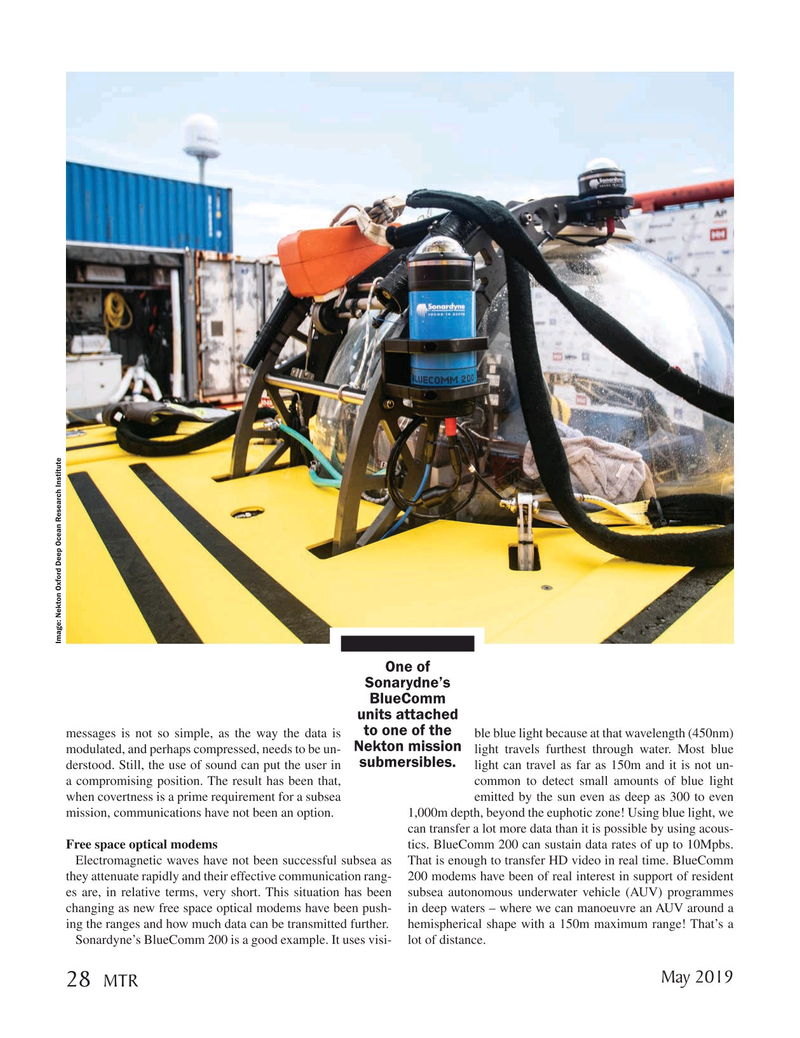
Page 28: of Marine Technology Magazine (May 2019)
Underwater Defense Technology
Read this page in Pdf, Flash or Html5 edition of May 2019 Marine Technology Magazine
Image: Nekton Oxford Deep Ocean Research Institute
One of
Sonarydne’s
BlueComm units attached to one of the messages is not so simple, as the way the data is ble blue light because at that wavelength (450nm)
Nekton mission modulated, and perhaps compressed, needs to be un- light travels furthest through water. Most blue submersibles. derstood. Still, the use of sound can put the user in light can travel as far as 150m and it is not un- a compromising position. The result has been that, common to detect small amounts of blue light when covertness is a prime requirement for a subsea emitted by the sun even as deep as 300 to even mission, communications have not been an option. 1,000m depth, beyond the euphotic zone! Using blue light, we can transfer a lot more data than it is possible by using acous-
Free space optical modems tics. BlueComm 200 can sustain data rates of up to 10Mpbs.
Electromagnetic waves have not been successful subsea as That is enough to transfer HD video in real time. BlueComm they attenuate rapidly and their effective communication rang- 200 modems have been of real interest in support of resident es are, in relative terms, very short. This situation has been subsea autonomous underwater vehicle (AUV) programmes changing as new free space optical modems have been push- in deep waters – where we can manoeuvre an AUV around a ing the ranges and how much data can be transmitted further. hemispherical shape with a 150m maximum range! That’s a
Sonardyne’s BlueComm 200 is a good example. It uses visi- lot of distance.
May 2019 28 MTR
MTR #4 (18-33).indd 28 4/25/2019 9:36:08 AM

 27
27

 29
29
